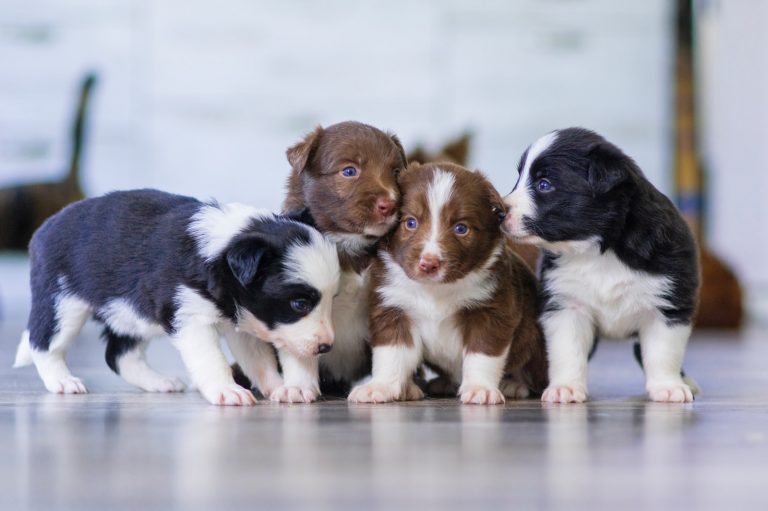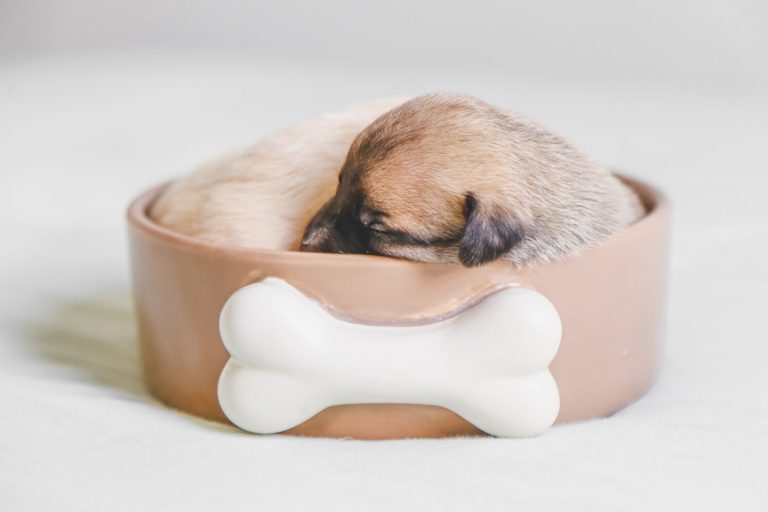Bad breathe is known as halitosis. Bad breath should not be assumed as normal in pets but is an indicator of poor health. It should be therefore be followed by a visit to a veterinarian once it is observed.
Oral and general physical examination, radiography, urinalysis and blood tests i.e. complete blood count (CBC) and biochemistry are common tests that help to come up with a diagnosis.
Maltese, Chihuahuas, Yorkshire terriers, Shetland sheep, Saint Bernards, Pekingese etc. are more likely to have halitosis. Bearded dogs e.g. Schnauzers usually harbor food particles and saliva on their fur which interacts with bacteria leaving a foul small. Common causes of halitosis include:

1. Periodontal disease
This refers to inflammation of the soft and hard structures in the mouth that support the teeth. These include the gum (gingivitis) and the bone structures (periodontitis).
Periodontal disease occurs as a result of poor oral hygiene. Impacted undigested food particles mix with saliva and bacteria in the mouth forming a sticky film around the teeth (plaque). This usually builds up overtime if not cleaned and mixes with minerals and serum from the gums causing it to harden forming what is known tartar.
Tartar forms around the teeth near the gum line causing inflammation of the gums and recession. This exposes the sensitive parts of the teeth e.g. dentine making it hard for dogs to feed due to pain. Bleeding, red gums, pus, yellowish coating on the teeth may also be seen.
Dental plaque and tartar also predisposes dogs to teeth decay and loss of teeth affecting their eating habits. They become unable to chew hard foods e.g. bones preferring softer foods.Toy breeds e.g. maltese are predisposed to periodontal diseases and owners should therefore be more observant.
Treatment entails dental scaling which is usually done under anesthesia. Light anesthesia is indicated in senior dogs or those suffering from organ failure. Antibiotics are also prescribed to treat gum disease as they may occur concurrently.
Regular dental checkups and dental cleaning helps prevent cases of periodontal disease. Dogs on wet canned food are more predisposed to these conditions therefore require frequent checkups as compared to those on dry food.
Feeding dry commercial foods helps to scrape of plaque as well as massage the gum which helps in blood circulation and preventing cases of gum disease. Feeding treats such as bones, dry hides or those fortified with enzymes that digest plaque are also beneficial. Brushing of teeth and use of mouth washes and sprays help to kill bacteria and remove undigested food debris in the mouth.
2. Kidney disease and diabetes
Kidneys help in filtering toxins from the blood. In cases of chronic kidney diseases this process is compromised leading to accumulation of theses harmful substances in the blood. This consequently leads to a smell similar to that urine (ureamic halitosis) from the mouth. It may be accompanied by other symptoms such as
- Increased intake of water
- Increased urination
- Dehydration
- Lethargy
- Vomiting
- Urinary incontinence (toilet accidents in the house)
- Fever
- Painful urination
- Fever
Your veterinarian as stated above may take a sample of urine for tests (urinalysis) as well as some blood work for diagnosis.
Chronic kidney disease requires emergency veterinary care. Treatment of the underlying condition usually resolves the halitosis.

3. Foreign Bodies
This occurs when foreign bodies e.g. bone splinters lodge in the gum, below the tongue or between teeth trapping undigested food particles in the mouth. Bacteria and saliva mix with the food debris leading to decomposition and foul odor. An oral examination is sufficient to come up with a diagnosis which is done with the dog restrained or sedated. Other accompanying symptoms include:
- Head shaking
- Pawing at the mouth
- Reluctance to eat
- Aggression in case wants gets close to open the mouth due to pain
- Drooling or hyper salivation
Treatment usually entails removal of the foreign body and flushing out the impacted food particles. Dental cleaning may be advised if there as signs of plaque or tartar build up on the teeth. Antibiotics may also be prescribed in case of injury caused by the foreign body.
4. Oral tumors
Tumors occur on the lips, gums, cheeks and palate of the mouth. It’s thought that dogs inhale carcinogens (cancer causing substances) when sniffing around their environment. These carcinogens go further to establish on the tissues of the mouth where they interfere with normal cell growth forming cancerous growths. Common types of oral cancers include: melanomas, squamous cell carcinomas and fibrocarcinomas. Benign cancers include epulis and papillomas.
Common symptoms include:
- Facial swellings
- Bleeding
- Reluctance to eat
- Drooling
Bad breath results from necrosis of the affected tissues, drooling and bleeding. Treatment entails surgical removal of the tumors. Abscesses on teeth root canals, mouth cavity or the nasal cavity as well as ulcers can also cause halitosis.
5. Diet
This is common in coprophagus dogs (dogs that eat fecal matter) or those that ingest garbage. This normally leaves a foul smell in the mouth. Securing garbage bins and keeping the dogs environment free offees may help resolve the problem. Fish or liver diets can also leave a bad smell in the mouth.
6. Teething
This is a transient problem common in puppies. As puppies loose teeth, bacteria, food and saliva may settle within the empty teeth pockets which decompose giving off a fishy or rotten smell. This lasts for approximately 4 weeks. Mouth washes and sprays can help control the smell.
7. Congenital defects (cleft palate)
This is common in puppies soon after birth. Cleft palate occurs when the palate of the nasal and mouth cavity fail to fuse during embryonic development leaving a hole on the roof of the mouth. In such situations, puppies fail to suckle well and appear malnourished. Food is normally seen coming out through the nostrils. In other circumstances it may get lodged in the nasal cavity where it decomposes giving off a bad smell. Treatment entails surgical correction to close the opening.
8. Lip fold pyoderma/dermatitis
This is common in dogs with saggy or droppy lips e.g. Bulldogs, Mastiffs, Pugs, Shar pei etc. Saliva and food particles collect and accumulate within the folds of skin on the lower jaw where the upper canine sits on the lip. Moisture and warmth in the area causes bacteria to thrive setting pace for decomposition and infection giving off a bad smell. Loss of hair, ulcers and reddening of skin around the affected area may also be evident. Dogs may also smack their lips and paw at the mouth to ease the irritation.
Management entails keeping the skin folds dry by wiping of the saliva and food debris 2-3 times a day antibacterial wipes. Cornstarch can also be applied on the area to keep it dry. Washing the area with antibacterial shampoo helps to keep the area clean and free of bacteria. Clipping hair also helps to reduce moisture.
Conclusion
Halitosis is a sign of poor health in dogs and should be taken with seriousness. Regular oral and dental checkups are important to ensure general good health of the pet including oral health which prevents mouth odor.







